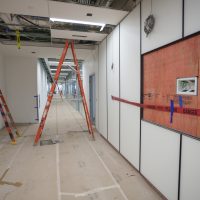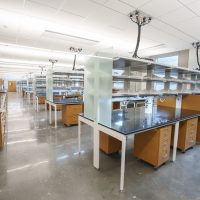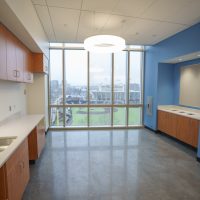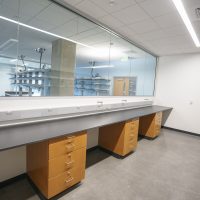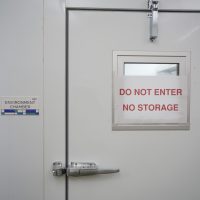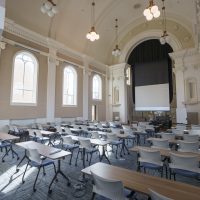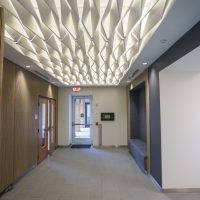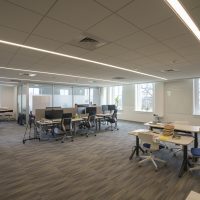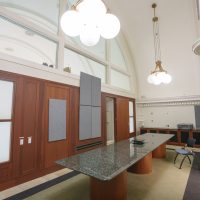For the spring 2024 semester, Vanderbilt University opened 114,000 square feet of new and renovated lab space to support faculty and students as they pursue groundbreaking research. The spaces, which are in the Engineering and Science Building and 17th and Horton (formerly the Sony Building), house faculty from four colleges and schools and more than a dozen programs and institutes. This landmark expansion in research space is a result of more than $50 million in direct investment by the university. Additionally, the university is investing another nearly $100 million in other construction projects actively under development.
“A world-class faculty requires world-class spaces to do their best work,” Provost C. Cybele Raver said. “I am eager to see the impact that these innovative and collaborative physical spaces will have on our faculty’s groundbreaking research.”
ESB and 17th and Horton are two parts of a campuswide initiative to evaluate and optimize existing spaces for faculty-led discovery through teaching and research. This effort includes the Science Space Planning Committee, which was launched by Raver in September 2023 and is examining Vanderbilt’s entire building portfolio to best meet current needs and anticipate future growth.
Engineering and Science Building Renovations
The Engineering and Science Building opened in 2016 to serve as a trans-institutional hub for innovation and research. Four floors were completed at the time, but the building was designed to grow upward and accommodate more faculty. Construction has concluded on floors five and six, adding 42,000 square feet of usable space. The new floors welcome faculty from the School of Engineering, School of Medicine Basic Sciences and the College of Arts and Science. ESB’s seventh and final floor is under construction and will welcome biochemistry faculty in 2025.
The initial nine faculty housed in the expansion were able to provide key inputs to the design team to best suit their research agendas. The greatest opportunity, though, lies not in the customizations but in the collaborations the new space will empower, said Ian Macara, chair of the Department of Cell and Developmental Biology in the School of Medicine Basic Sciences.
“Faculty from my department have interests in mechanobiology, and now these faculty will be next door to one another and can more easily collaborate,” said Macara, who has five faculty members moving onto ESB’s fifth floor. “Our new home in ESB will also provide the opportunity to interact with scientists from Biomedical Engineering, who are on the fourth floor and also have interests in mechanobiology. I anticipate spectacular science to emerge from this new space.”
The new space also furthers interdisciplinary study and research for students, said Andrea Locke, assistant professor of biomedical engineering and chemistry. Locke, who holds appointments in the School of Engineering and the College of Arts and Science, is excited about how the new ESB space will “provide greater opportunities for my students to collaborate across the two colleges. ESB fosters a very interdisciplinary atmosphere, with centers such as Vanderbilt Institute of Nanoscale Science and Engineering, the Wond’ry and the future BioMIID facility.”
17th and Horton Renovations
On the east side of campus, faculty from the School of Engineering, Peabody College and the College of Arts and Science have moved into the renovated 17th and Horton building. It has been reimagined as a quantitative hub that brings together synergistic research and teaching programs. The distinctive brick and stone complex, which is listed on the National Register of Historic Places, was built by the Little Sisters of the Poor as a convalescent home in 1916, and it housed Sony Music before Vanderbilt’s purchase of the structure in 2014. The 72,000-square-foot renovation provides collaborative spaces for the Data Science Institute, Peabody College’s LIVE initiative, the School of Engineering’s computer science department and faculty from A&S’s math, physics and astronomy departments.
“A great university invokes images of historic buildings and beautiful lawns, but the reality is that a university like Vanderbilt requires a creative and diverse approach to built spaces,” said Eric Kopstain, vice chancellor for administration. “We are investing boldly to ensure that our existing and future spaces inspire and support the bold ambitions of our incredible community.”
Additional projects underway
As faculty move into these newly completed spaces, the university has already committed an additional $93.5 million for three projects currently under development, which will provide 128,600 square feet of renovated space for faculty. Two projects, the renovation and expansion of Garland Hall and ESB’s seventh floor, are in progress. Peabody College’s Payne Hall will undergo an extensive remodel and modernization project beginning in summer 2024.
With the campuswide space survey ongoing, the Office of the Provost and the Division of Administration are committed to providing Vanderbilt faculty with the best facilities possible in which to teach, research and pursue the greatest possible societal impact through new discoveries.
